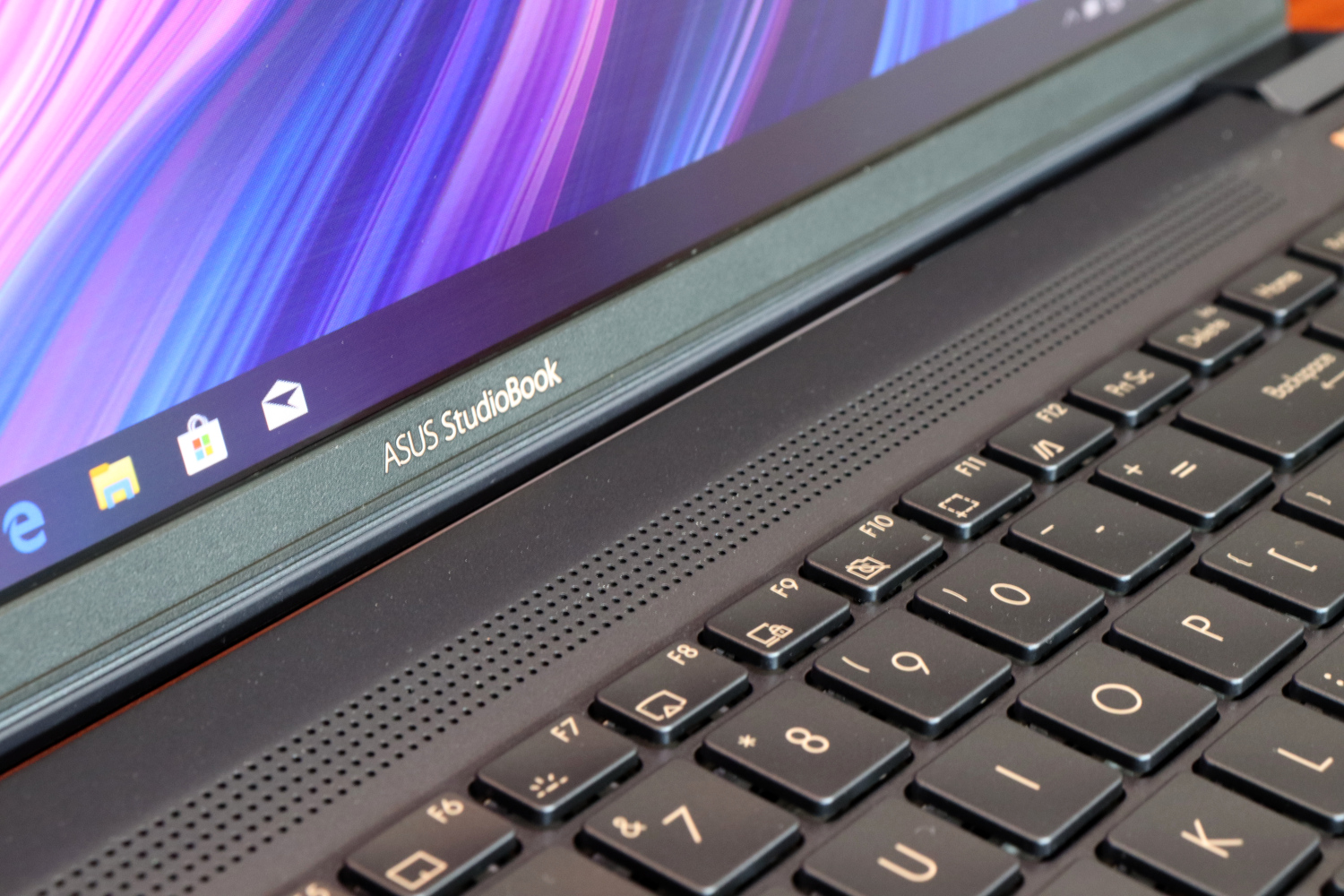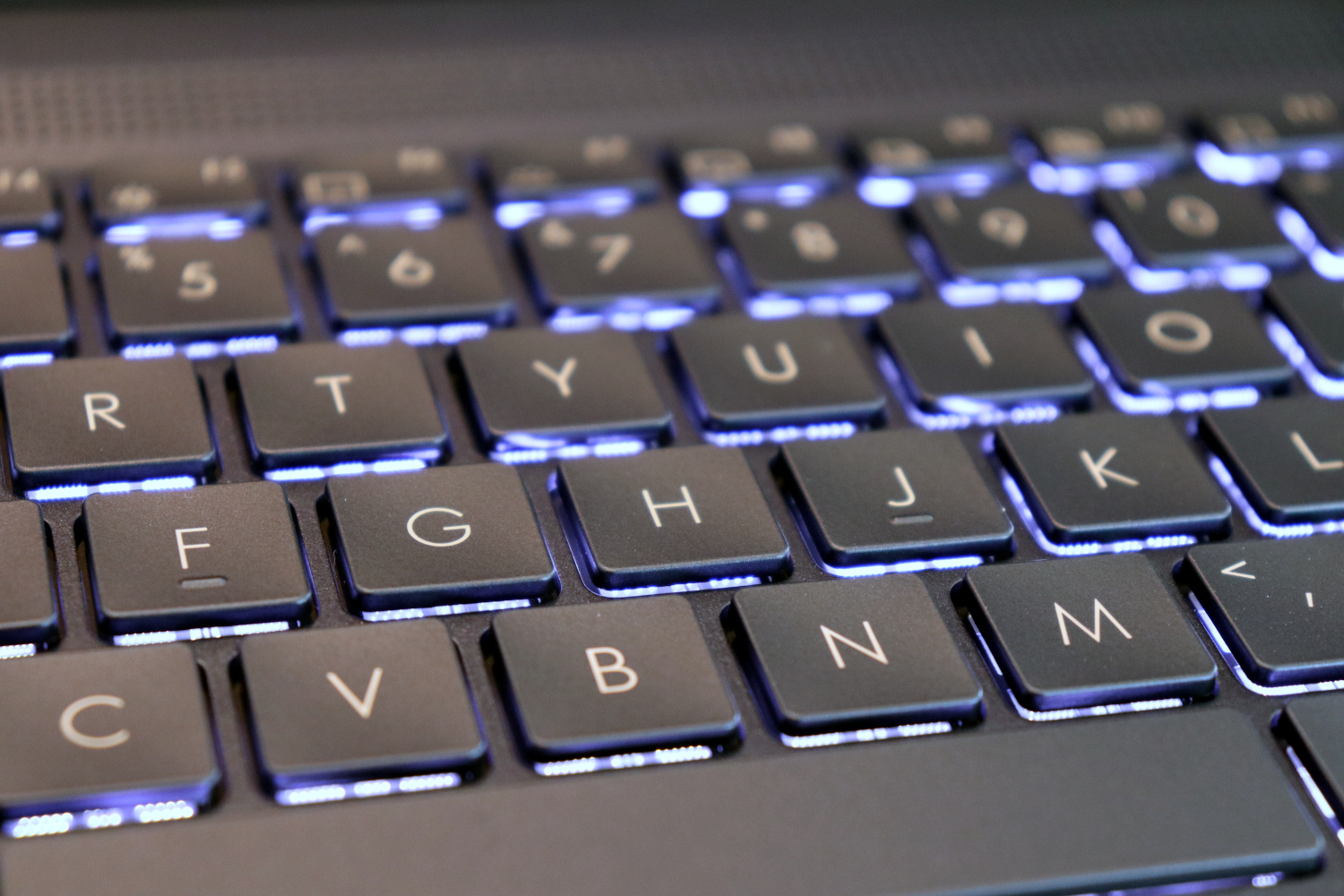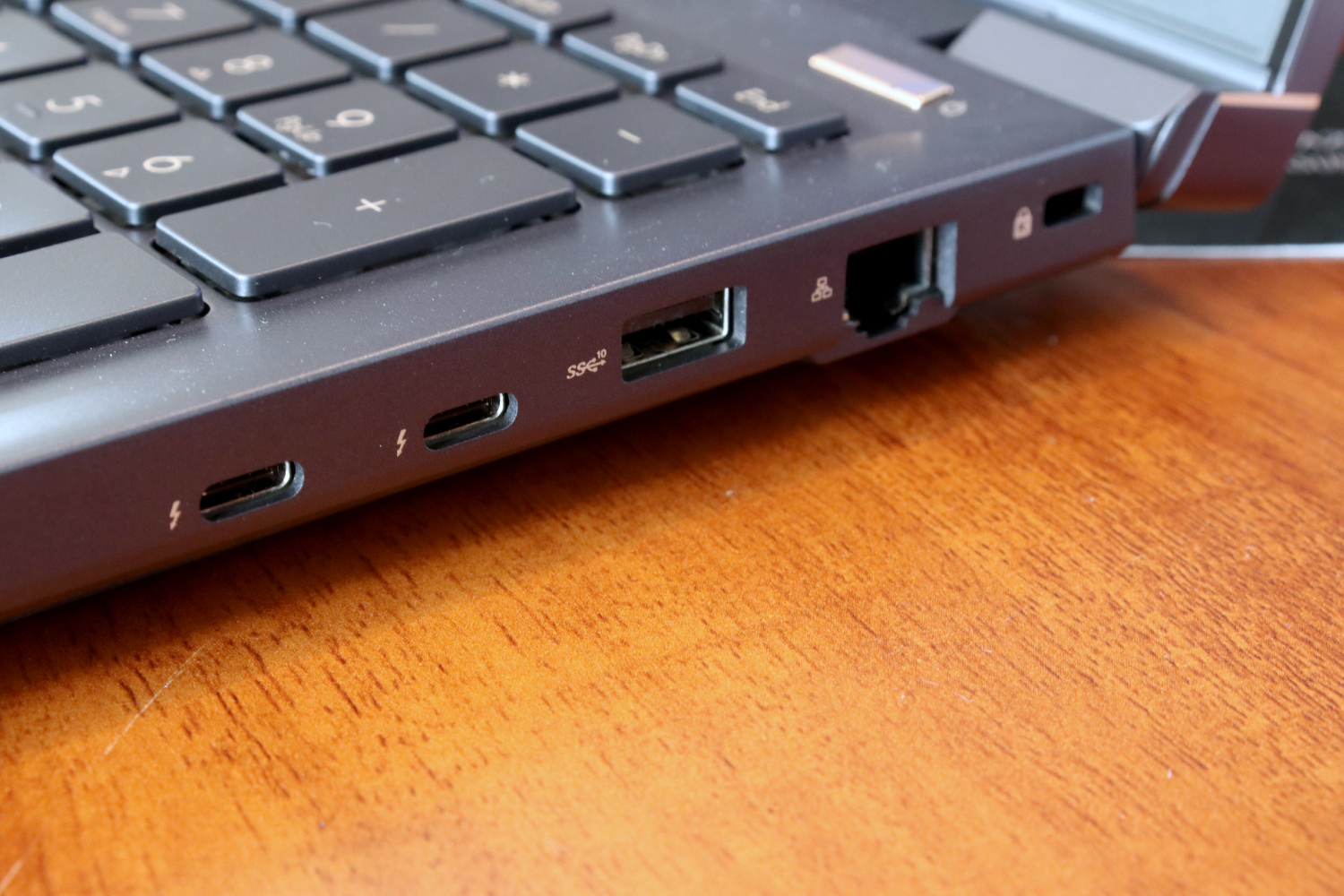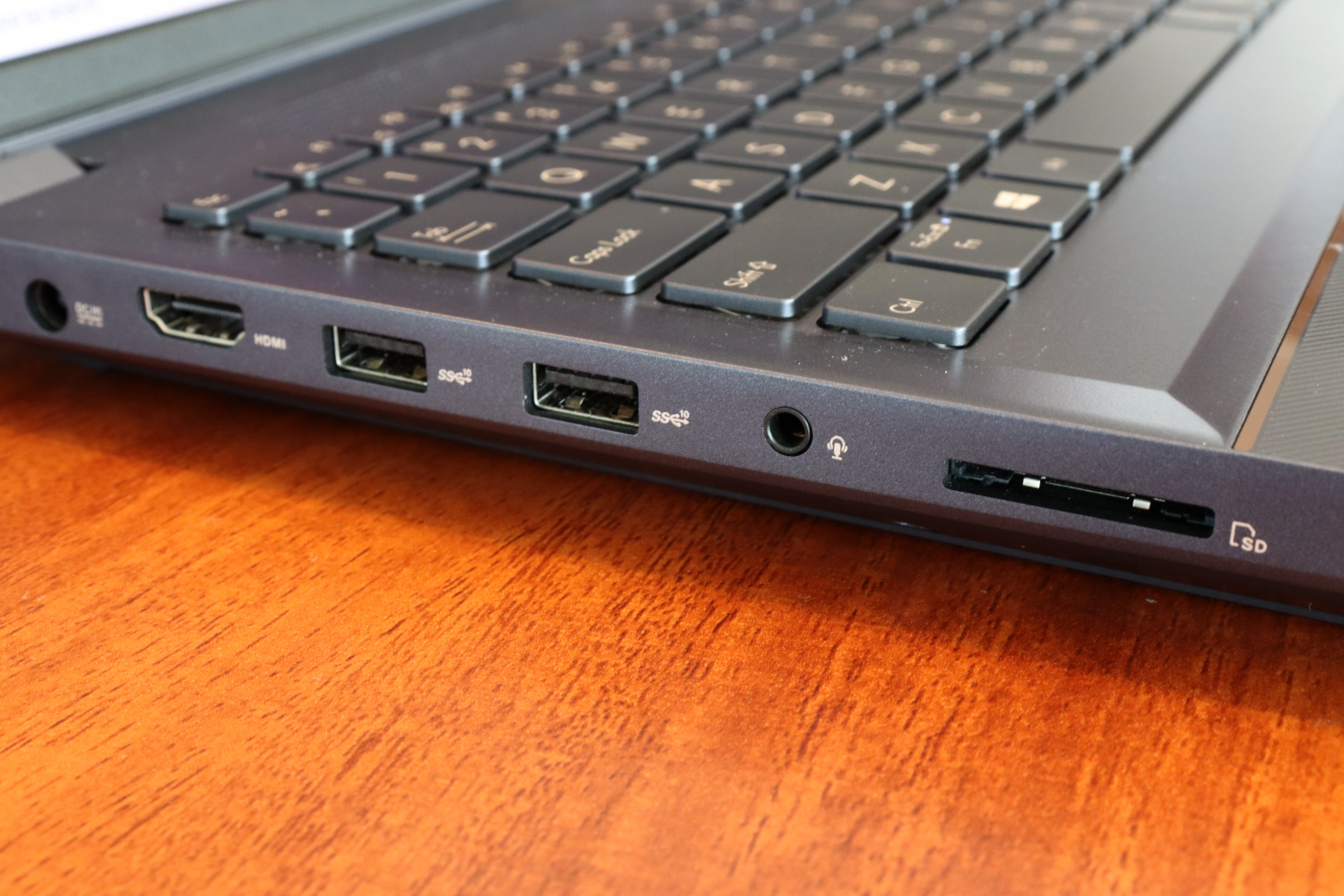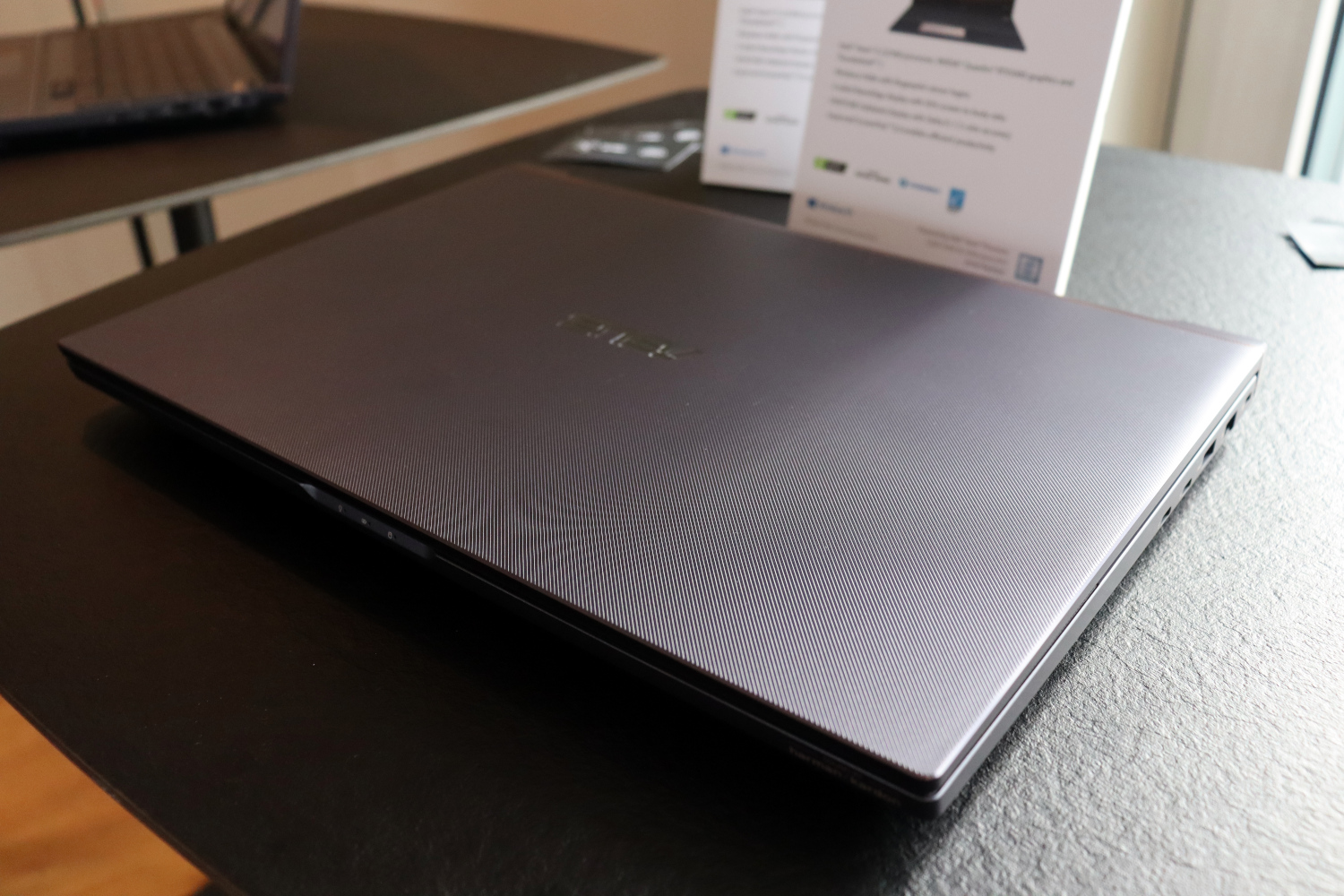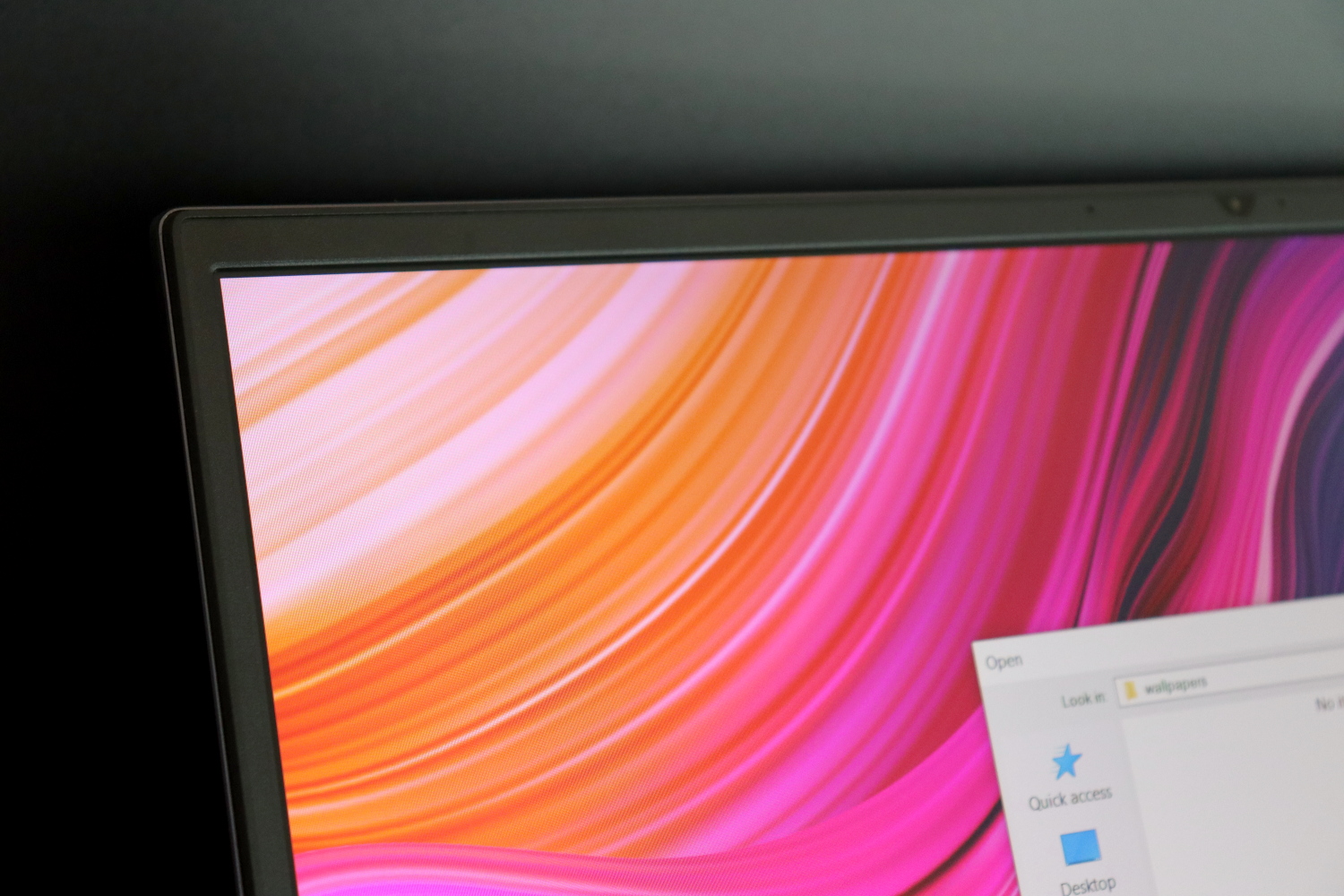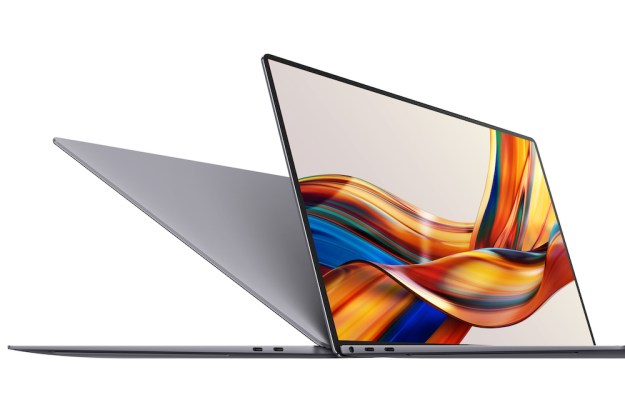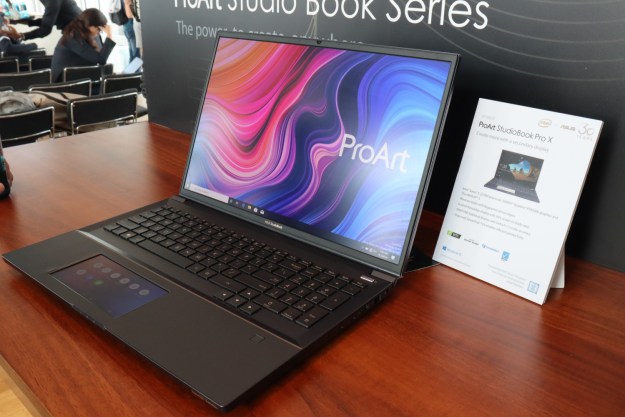
“Six cores might not turn heads, but a pair of gorgeous displays certainly will.”
- Professional, understated design
- Powerful hardware with plenty of storage
- Gorgeous main display in 16:10 ratio
- Second screen is an intriguing tool for creatives
- Robust build and port selection
- Hefty despite slim build
- GPU falls behind the more capable StudioBook One
Bespoke crafted laptops for specific audiences have typically targeted a few key sectors; gaming, budget, and professional being the most obvious. But a new breed of laptop looks to cater to a more nuanced, if not niche, audience. Like the ProArt desktops that came before, Asus’ new ProArt StudioBook line is aimed squarely at creative professionals. Arguably, the most intriguing of the lot is the new ProArt StudioBook Pro X from Asus. It’s a system with amazing power and an equally exciting second-screen display in the touchpad.
We managed to get our hands on one at IFA 2019 and after trying some of its ProArt siblings, the StudioBook Pro X is the one that’s stuck with us the most.
The (almost) best of everything
The ProArt Studio Book Pro X is technically the second most powerful laptop in the new range, falling ever-so-slightly behind the ProArt StudioBook One. But its spec sheet is still packed with some of the most powerful components in the world today.
The Pro X has by far the more impressive memory configuration, offering up to 128GB of DDR4.
At its core is a choice of Intel Core i7 or Intel Xeon CPU, each with six cores and high clock speeds, paired up with an Nvidia Quadro RTX 5000 graphics chip for some serious processing and rendering grunt. The system is fully ISV certified, which suggests that no matter what load you throw at this system, it’ll crunch through it with ease. We’re also told by Asus that the laptop was designed with a powerful cooling solution which prevents thermal throttling, so you can expect sustained performance within Intel’s typical boost parameters, to make sure that your rendering and processing tasks are handled as quickly as possible.
While its CPU and GPU might not match the StudioBook One’s, the Pro X has by far the more impressive memory configuration. Offering up to 128GB of DDR4. And with RAID-0, high-speed NVMe storage support, buyers have the option of a drive configuration which can reach 6GBps. That helps ensure as little downtime as possible when transferring or working on large collections of — or merely large — files and results in a snappy and responsive usage experience.
Taking the professional slant of this laptop seriously, Asus has bucked the connectivity trend of less-is-more, and has packed the StudioBook Pro X with plentiful ports. It has a trio of high-speed USB-A 3.1 Gen 2 ports, a pair of USB-C Thunderbolt 3 ports, a headphone jack, HDMI-output, SD card reader, and a coveted Ethernet port for zero restrictions on your networking capabilities.
A joy to behold
Alongside its premium hardware, Asus has left no stone unturned when it comes to the visual clarity and overall look and feel of the StudioBook Pro X. It’s a tastefully understated design, with a muted but classy grey color scheme that’s accented by little angular sweeps and lines along the front edge of its lower-half. The Asus NanoEdge bezels remain thick enough at the top to house the webcam, but little else, with light rounding at the corners giving a professional, but far from sharp, aesthetic. There’s a 97% screen to body ratio, leaving the user with little wasted space and an immersive view of what they’re working on.
The screen itself is a hallmark of the ProArt StudioBook range. With color accuracy so important in all manner of creative and professional fields, Asus has ensured that the StudioBook Pro X supports 97 percent of the DCI-P3 color gamut and with full Pantone validation, you can be sure that its colors are near true-to-life. In person, even with aggressive exterior lighting, we found it to be easily viewable, with great clarity and rich, deep colors.
It might not break ground on the resolution front, at just 1,920 x 1,200, but the 16:10 aspect ratio is a great, modern touch that gives it a professional feel away from more typical, 16:9 offerings.
The lid and touchpad have a carbon-fiber effect coating which helps differentiate them from not only the rest of the laptop, but a majority of the system’s competitors. Keyboard keys have tasteful backlighting for low-light operation and both it and the touchpad were accurate and responsive.
But it’s its secondary function of that touchpad which is arguably the most intriguing component of this entire system.
Double the screens

Secondary displays haven’t always been as useful as they might have been. We’re still not quite sure what to do with the MacBook Pro’s Touch Bar, even if you can run Doom on it. But the optional ScreenPad — that we first saw in the ZenBook Pro 15 — is an intriguing extra for the StudioBook Pro X. It adds smartphone-like interaction with the laptop, offering quick access app launchers and bespoke commands in your favorite applications.
The 16:10 aspect ratio is a great, modern touch, that gives it a professional feel away from more typical, 16:9 offerings.
We found it responsive and accurate to the touch, with easy access to menu items for tweaking brightness, resolution, and refresh rate. You can even have it display a unique background image for a light note of personal flair in your touchpad. When you’re done using it to launch applications, or just want a standard touchpad, you’re just a tap away from it.

We’d need to use it for longer than we had in our brief hands-on to tell you how useful such a display is day-to-day, but we’re intrigued by the possibilities of such a screen on an altogether capable laptop.
The best, at a better price?
The overall feel of the ProArt StudioBook Pro X is a robust one. It feels like a professional piece of equipment, with a sturdy hinge and though it’s quite a svelte device for the 17-inch form, it’s not lightweight, lending it a strength and rigidity that isn’t often found in more streamlined devices. While that might make it less portable than your average mid-range device, that’s not the hallmark of the StudioBook Pro X.
With great hardware, a professional look and feel, and an intriguing second screen that could offer more useful function than the thin and often-redundant-feeling MacBook Pro’s Touch Bar, this StudioBook laptop could prove to be the most exciting of the expanded ProArt range.
If you need more graphical horsepower, the ProArt StudioBook One is the more capable device, but the Pro X feels like it better embodies the creative professionals that Asus is targeting with its new devices. We don’t have a firm release date or pricing for this model just yet, but if it can undercut the more powerful One option as well as provide greater functionality, this model could be the best of the new ProArt StudioBook lineup.
Editors' Recommendations
- The new Asus Zenbook S 13 is like a MacBook, only better
- Asus’ new ProArt Studiobook has a glasses-free 3D OLED screen
- Asus ZenBook S 13 Flip vs. HP Spectre x360 13.5: you can’t go wrong
- Lenovo Slim 7i Pro X hands-on review: A do-it-all laptop
- Surface Laptop Studio to get this killer MacBook Pro feature

